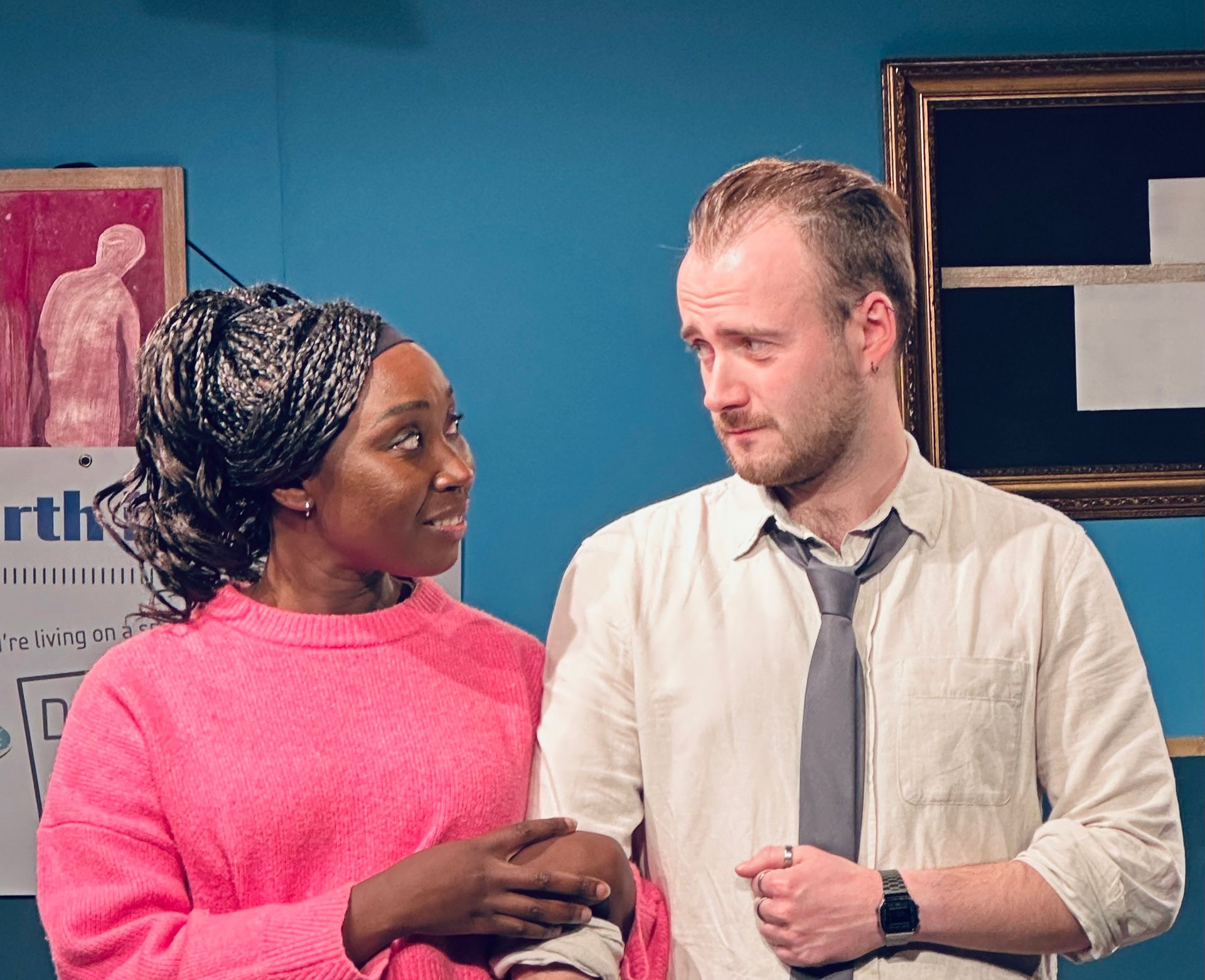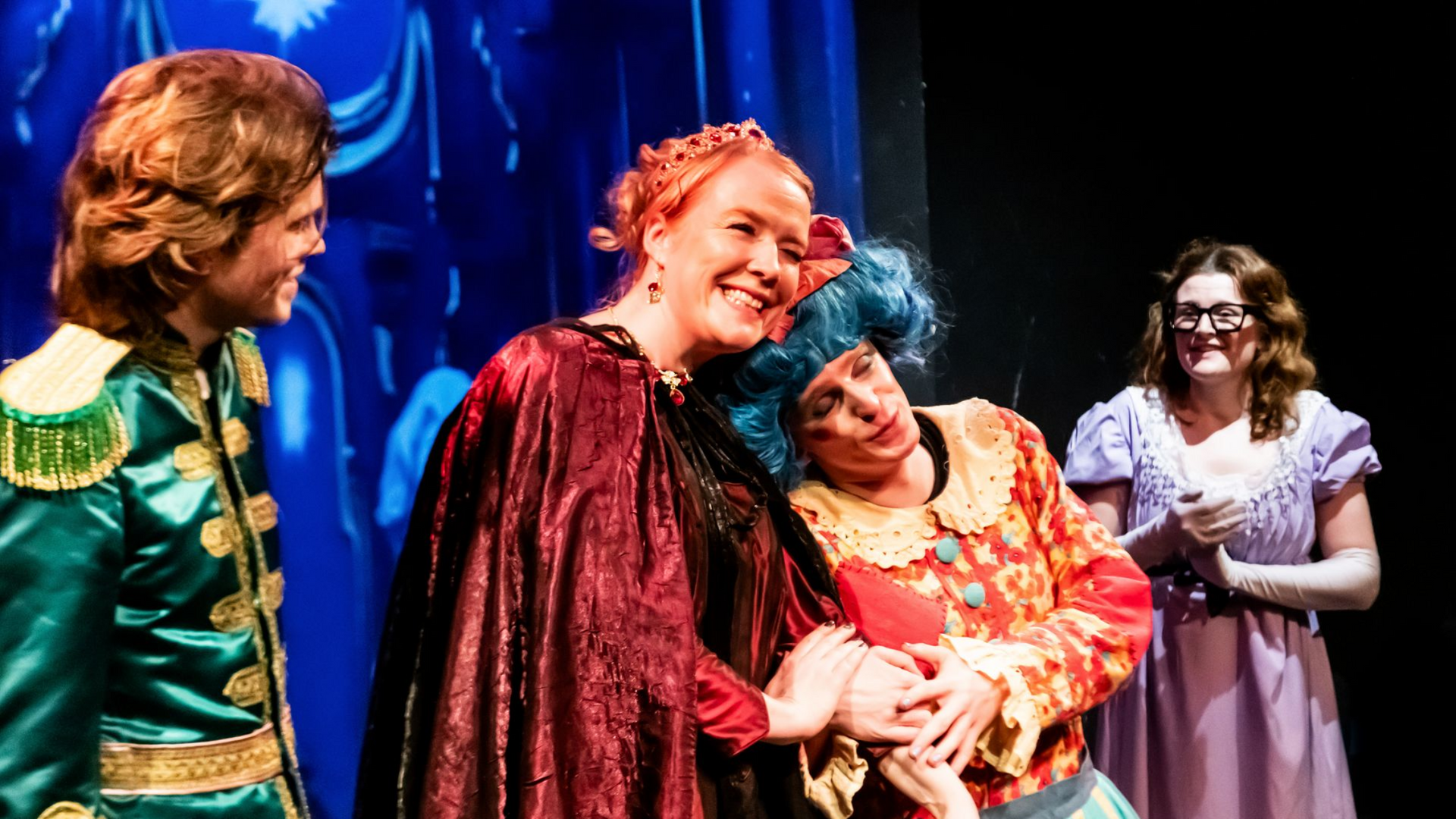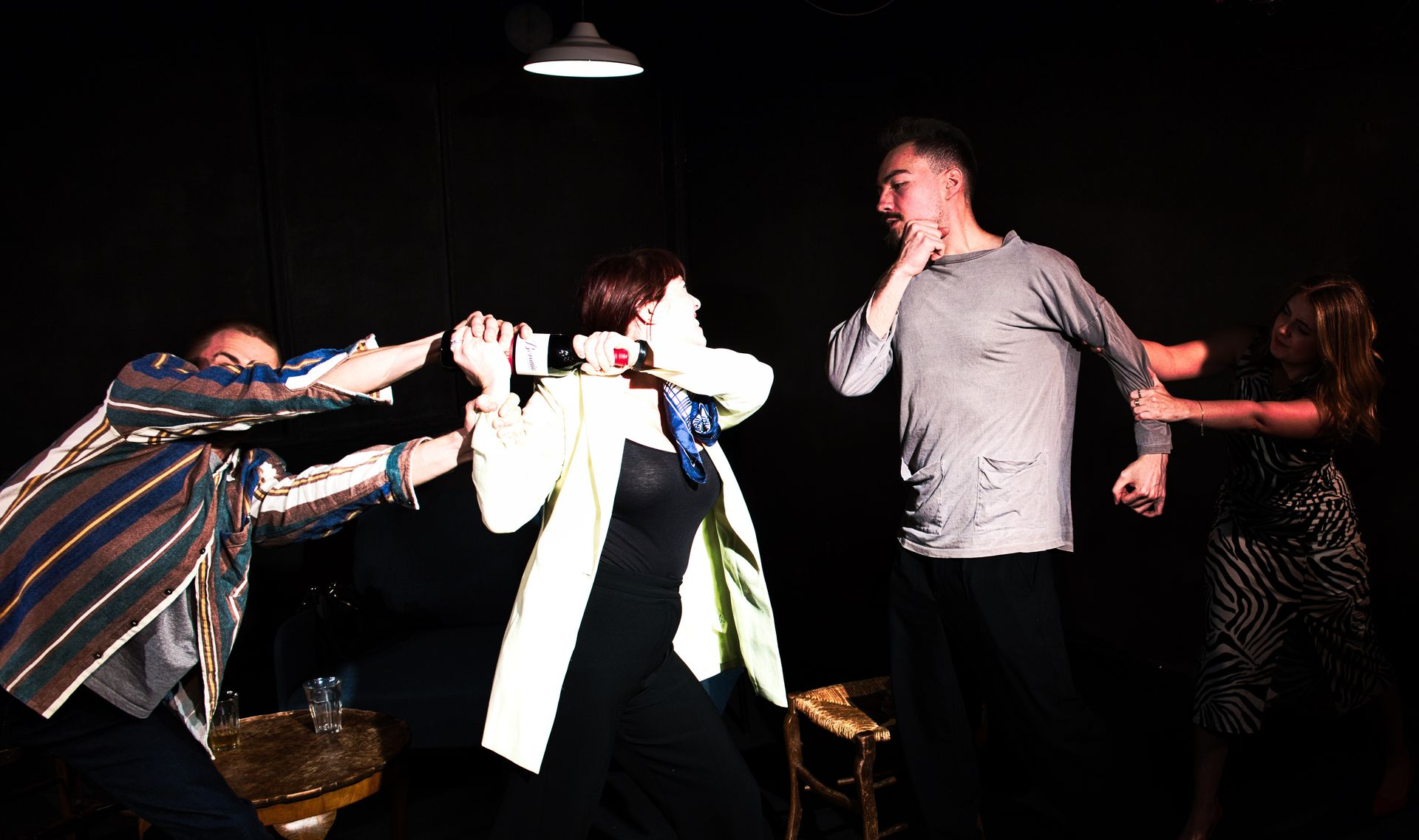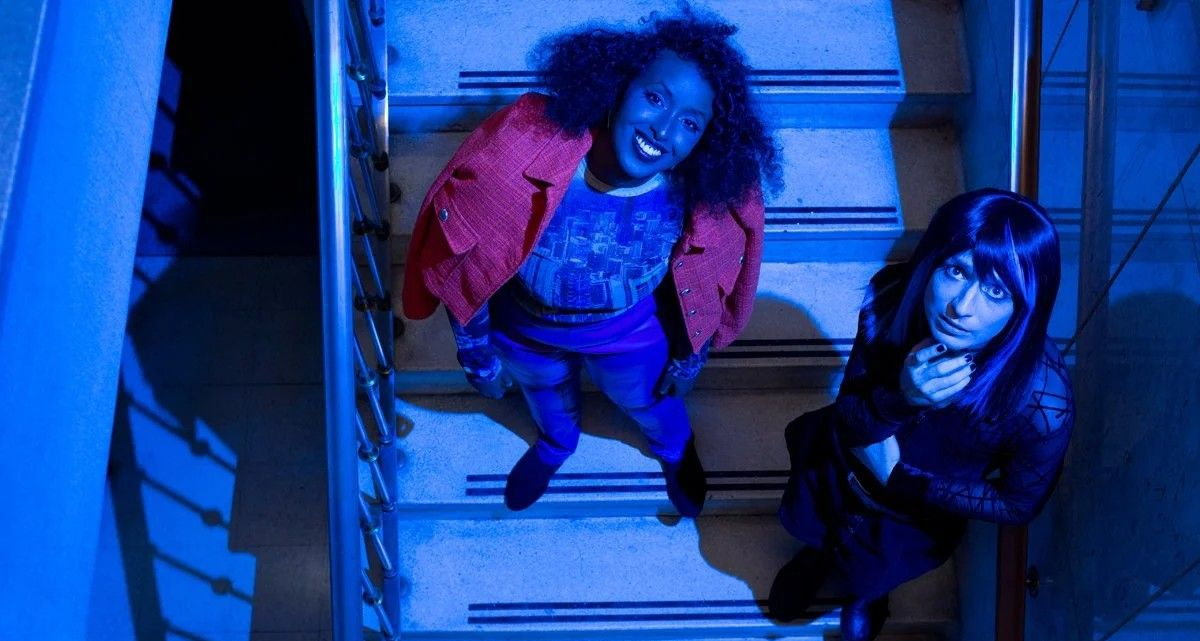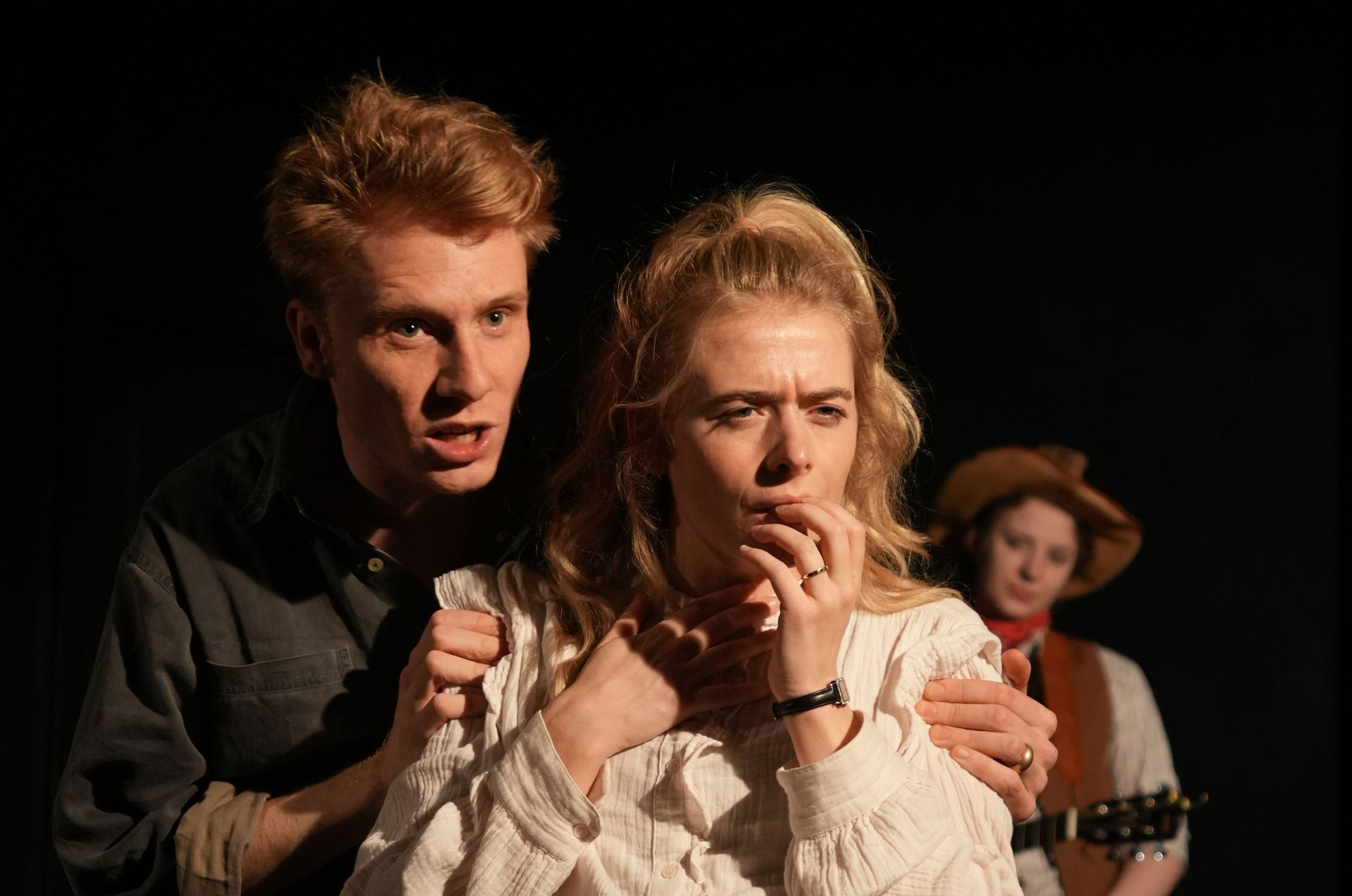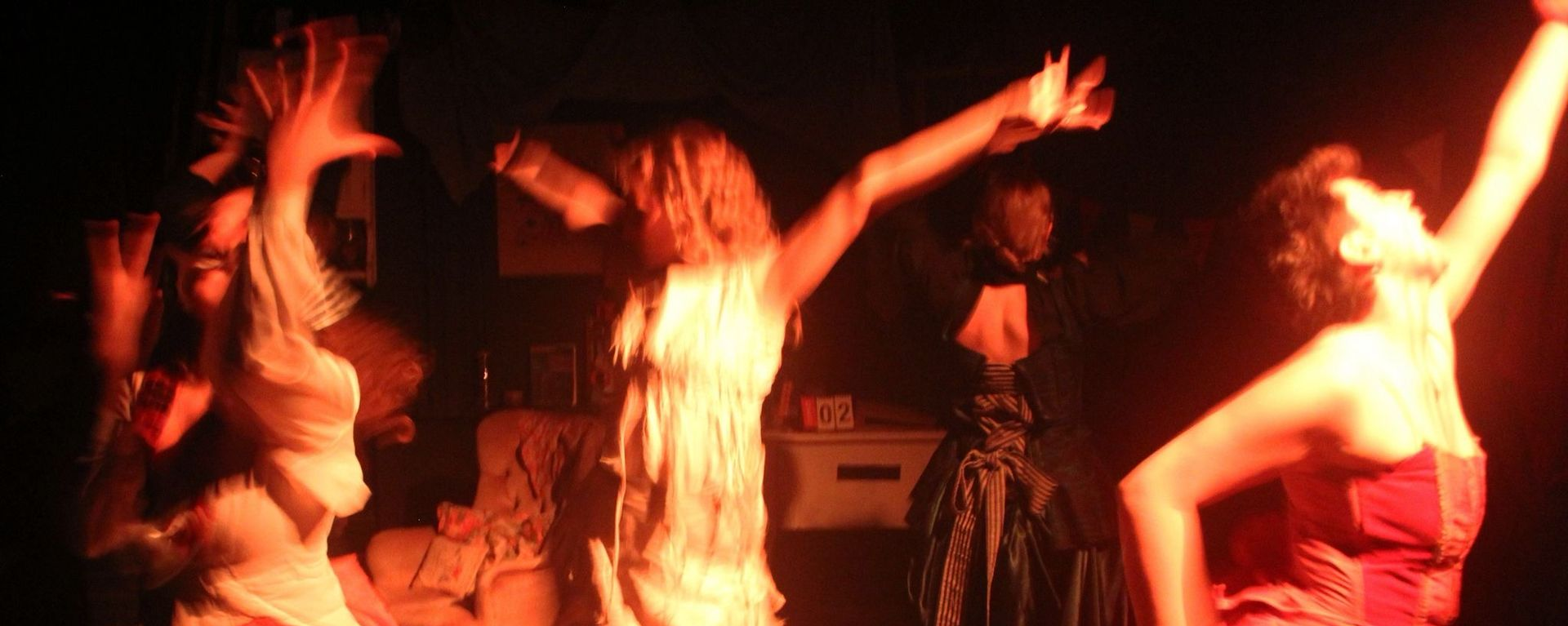by Vee Palumbo
•
16 December 2025
‘Queer, joyful, breathless; a sweet (if stumbling) adaptation of a sweeter story’ ★★★ Sarah Ruhl’s Late, A Cowboy Song is an exercise in binaries and boundaries. What’s real vs. what’s not real; the life lived vs. the life imagined; shall I stay or shall I go? We follow three eclectic characters – ‘always late and always married’ Mary , childhood sweetheart, husband and modern-art obsessed Crick , and Red , the lady cowboy teaching Mary to ride a horse just beyond the city limits (and conventions). As the central marriage spirals through questions of love, gender expectations and actualising adult life, Mary and Red forge a connection based on Red’s ability to encapsulate a true, raw rendition of the American Dream: to be and do and live how she wants. Life, liberty and the pursuit of happiness. Alex Stroming’s direction leans generously towards these character studies, to varying impact, setting this slice of life against sparse, functional staging that allows all focus on the acting three. Oriel Bathurst’s Mary is undoubtedly the standout performance. At her core, Mary is a woman in the process of absconding the rulebook of her Pittsburgh existence, at times confused and often unable to contain her lust for life; Bathurst manages this balancing act with care and intelligence: verve in the emotional peaks, tenderness and introspection in the quiet moments. As cowboy Red affirms at a later juncture, “You have to believe in invisible things”, and Bathurst’s performance certainly makes one want to. Her chemistry with Konnie Kendall’s Red rings true, if somewhat let down by the pacing of their earlier interactions. Red herself could almost be a figment of Mary’s imagination, circling her life as she omnisciently circles the stage; cowboys hats off, also, to Kendall’s stellar vocal turn as she ballads her way into Mary’s plans and affections. Particularly enchanting was the dance they share at one point. That being said, there isn’t much to elevate Red beyond a caricature of the slow-talking, lady-romancing, Wild West yeehawer. But lesbian. Crick (Alex Osborne) was a question mark in more ways than one: almost perpetually annoying, money-squandering, and endlessly immature, the audience might feel a smidge resigned to his petulant contribution, and only slightly alarmed at his sudden feint at violence at the play’s somewhat lukewarm dramatic showdown. Similarly perplexing was Crick and Mary’s relationship. We seem to meet both characters already at the trail end of the behaviours that lead to the ultimate breakdown of their relationship. Though she meets catalyst Red early doors, we are left a little unsure of the affection that has supposedly kept Crick’s leash on Bathurst’s curious and freedom-seeking Mary, enough to have a baby with him. The phantomatic presence of the intersex baby itself could also have been handled with a tighter touch. Overall, these are characters an audience might feel they wish they knew more about, whilst simultaneously feeling like they’ve been spoon-fed in interpreting. Ruhl’s play raises questions on queerness, on identity, on marital abuse, on nostalgia and while Stroming takes a good punt at answering them, as stated above, this is also a script seemingly designed to allow a theatrical audience to fill in some of those emotional gaps themselves. With more organic pacing and a reassessment of character dynamic pressure points, it could be really engaging. As it is, Stroming has created a thoughtful, sensitive staging, replete with romance and joie-de-vivre. Director: Alex Stroming Cast: • Mary - Oriel Bathurst • Red - Konnie Kendall • Crick - Alec Osborne Producer/Company: T. Regina Theatre Co. Musical director/composer: Konnie Kendall Design: Emily Nelson Stage Manager: Jessica Potts Lighting Designer: Phil Hamilton Intimacy Director: Liz Kent Voice Coaching + Marketing/Social Media: Meighread Dandeneau
